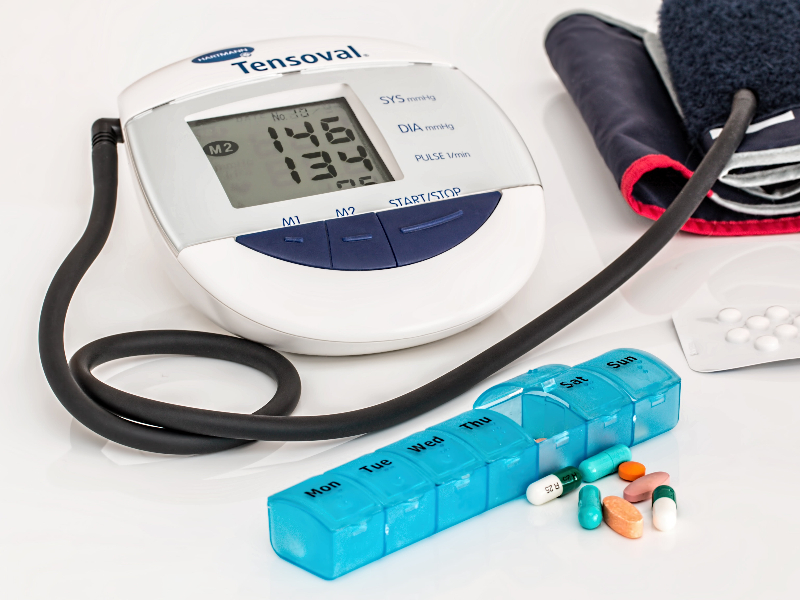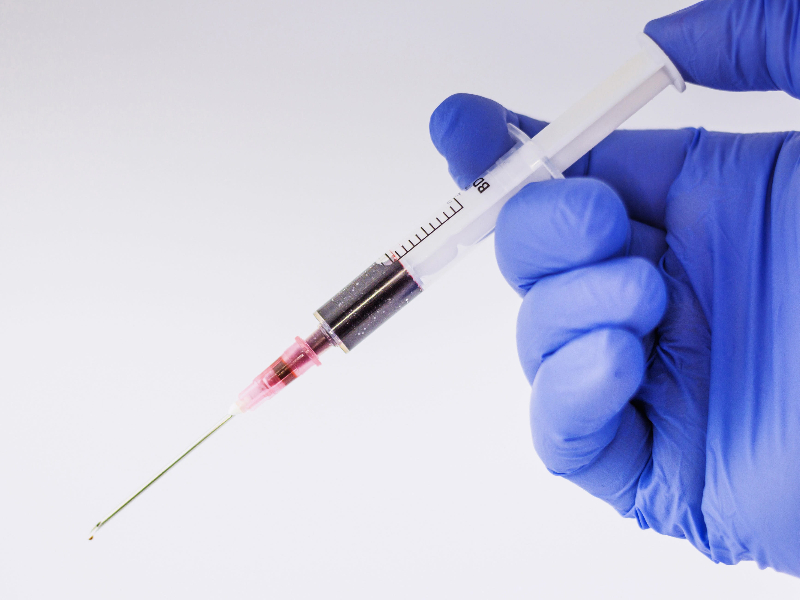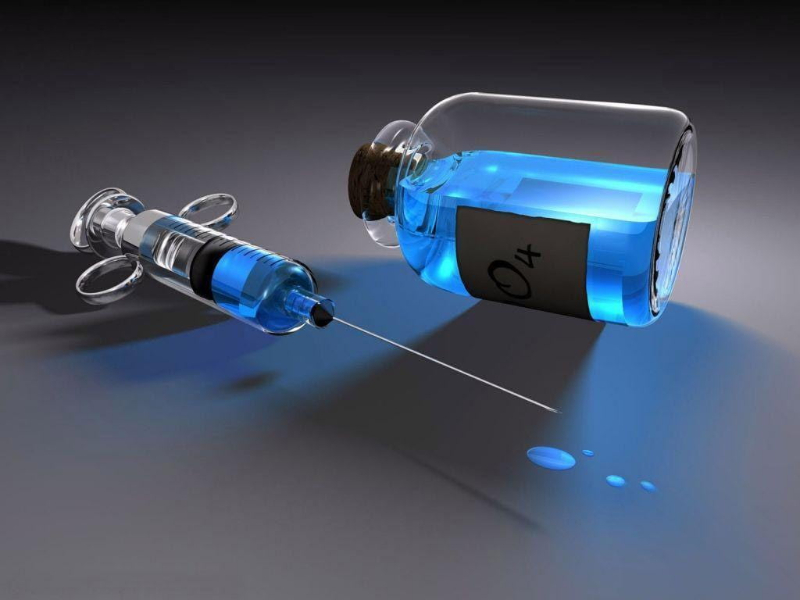The High Cost of Bad Medical Translation.
Your product’s success hinges on a single word. Don’t let a mistake cost millions.
Protect your investment, your patients, and your brand. Our expert translation services are your cheapest insurance policy.
A single error can compromise an entire dataset. Ensure your research is flawless from protocol to publication.
Translation mistakes can trigger FDA or EMA clinical holds. Avoid costly delays and remediation with expert services.
Mistranslated instructions risk patient harm. Our accurate medical translations are your unwavering commitment to patient well-being.
The High Cost of Bad Translation in the Life Sciences.
high cost of bad translation into a negligible risk.
A single mistranslated word doesn’t just cost the price of a re-edit. It can trigger a chain reaction with a multimillion-dollar price tag. In the high-stakes world of life sciences, where every phrase in a clinical trial protocol, patient consent form, or medical device label is a matter of compliance and patient safety, a seemingly minor translation mistake in a clinical trial can unravel years of research and investment.
This article isn’t just about the risks of bad medical translation; it’s about the verifiable financial consequences. We’ll show you the true cost, breaking it down with a «Cost Calculator» framework that moves from the most obvious expenses to the hidden, devastating ones. Let’s calculate the real cost.
The Cost Calculator: A Breakdown of Escalating Expenses.
When a translation error occurs in the life sciences, the costs aren’t static; they compound. They start with a manageable expense and quickly snowball into a financial avalanche, threatening to halt product launches, trigger regulatory sanctions, and even lead to dangerous patient outcomes. This isn’t a theoretical exercise; it’s a model of the real-world financial impact of translation errors.
The Direct Cost (The ‘Cheapest’ Part).
The initial, most visible cost of translation errors in healthcare is the expense of fixing them. This is what most people think of when they consider a mistake: the price of a do-over. While this may seem trivial in the grand scheme of things, it’s rarely a simple re-edit.
Fixing a single error often requires a complete re-review of the entire document to ensure no other mistakes exist. This involves senior project managers, subject matter experts, and dedicated linguists, all of whom must be pulled from other projects. The time spent on this remediation process is time not spent on new, revenue-generating work. For a clinical trial with hundreds of pages of documentation, the cost of re-translation and the associated project management time can easily range from $5,000 to $20,000. While this is a clear and immediate expense, it’s just the tip of the iceberg.
Let’s dissect this a bit further. Imagine a small biotech firm is preparing to submit a new drug application to the European Medicines Agency (EMA). The application includes a 500-page dossier, a significant portion of which has been translated from English into German for a European site. During an internal review, a single, critical error is discovered: the term «dose-intensive» has been rendered as «high-dose» in a patient information leaflet. This isn’t just a simple typo; the two terms have different pharmacological meanings and legal implications. Rectifying this isn’t as simple as changing one word. The entire document must be re-checked to ensure consistency. The in-house legal team and subject matter experts must re-verify the content. The project manager must coordinate the fix, and a new quality assurance round is necessary. This process alone can consume dozens of hours of high-value time, pushing the actual direct cost well into the tens of thousands of dollars, far exceeding the initial translation fee. The financial impact of translation errors begins here, and it only gets worse.
The Operational Cost: Delayed Product Launches.
The moment a document is flagged for a translation mistake in a clinical trial, the entire process grinds to a halt. Regulatory bodies won’t review documents with inconsistencies, and clinical sites won’t administer protocols with ambiguities. A single delay can push back a product’s launch timeline by weeks or even months. The financial impact of this is astronomical.
Consider a new drug with a projected annual revenue of $100 million. A one-month delay due to documentation issues can result in a loss of nearly $8.3 million in potential revenue. For a blockbuster drug aiming for billions in sales, a mere month’s delay can equate to over $100 million in lost revenue. This isn’t just a hypothetical scenario; it’s a daily reality for companies that don’t prioritize high-quality translation from the outset.
The ripple effect of a delayed product launch due to translation extends throughout the entire organization. Marketing teams lose critical months to build pre-launch buzz and educate the market. Sales teams miss out on their window to secure initial contracts. The company’s stock price may fluctuate as investors become anxious about the delay. Furthermore, the delay might allow a competitor with a similar drug to enter the market first, seizing a crucial market share that may be impossible to regain. The window of opportunity in life sciences is narrow and fleeting. Every day counts, and every day lost because of a preventable translation error is a day of lost revenue and lost competitive advantage. This is the true meaning of the cost of medical translation mistakes. It’s not about the cost of the translation itself; it’s about the staggering cost of inaction and error.

The Cost of an Error is Exponential.
Your Cheapest Translation Is Your Most Expensive Mistake.
A small mistake can trigger a catastrophic chain reaction, leading to losses far beyond the initial project cost.
The Regulatory Cost: FDA/EMA Rejection.
Perhaps the most feared consequence of a translation mistake in a clinical trial is regulatory rejection due to translation. Global health authorities, such as the FDA in the United States and the EMA in Europe, have zero tolerance for inaccuracies in documentation. They consider these errors a serious risk to data integrity and patient safety.
A translation mistake in an Investigational New Drug (IND) application or a marketing authorization dossier can lead to a complete rejection or a Clinical Hold, meaning the trial cannot proceed until the issue is rectified. The cost of a clinical hold is immense. It requires companies to go back to the drawing board, re-translate, re-submit, and re-engage with regulators, a process that can take months or even years. The direct remediation costs alone can range from $500,000 to $10 million or more, depending on the scope of the error and the number of sites affected. This doesn’t include the lost revenue from the continued delays. The risks of bad medical translation are not just about financial loss; they are about compromising the entire product development pathway.
Consider a real-world scenario. The FDA’s database of warning letters reveals instances where companies have faced significant sanctions due to inadequate documentation, including translation. For example, a medical device company received a warning letter because the instructions for use, translated for a foreign market, contained errors that could lead to improper device handling and potential patient harm. The FDA stated that these errors rendered the device «adulterated» and «misbranded» under the Food, Drug, and Cosmetic Act. This FDA rejection translation issues finding can lead to forced recalls, fines, and further investigations. In another instance, a clinical trial was placed on hold because the informed consent form (ICF) did not accurately convey the risks and side effects to non-English-speaking participants. This translation mistake in clinical trial documentation compromised the entire study, as the data collected from those patients was deemed invalid due to a violation of ethical and regulatory standards for patient consent. The cost of translation errors in healthcare in these cases is not just financial; it’s the potential loss of a life-saving therapy for an entire patient population. The cost to regain compliance and restart a clinical trial after a hold can be exorbitant, easily reaching into the millions of dollars. The burden of re-translating, re-submitting, and then re-recruiting participants—all while a company’s competition gains ground—is a crushing reality.
For more information on how we mitigate these risks, you can learn about our rigorous quality process designed to prevent these errors. To have a deeper insight into our services, you can visit our dedicated professional translation services pillar page or our life science translation pillar page. We believe that by ensuring the accuracy of every document, we are helping to protect not just your investment, but the integrity of your work. The next section of this article will move beyond the financial models to explore how these errors can escalate from a simple mistake to a full-blown public crisis.
From Lab to Lawsuit: How One Translation Mistake Derailed a $2B Drug.
A single translation mistake in a clinical trial can feel like a small tremor, almost imperceptible at first. But in the fragile ecosystem of a global clinical study, that tiny error can trigger a seismic chain reaction. This isn’t just a hypothetical scenario. It’s a gripping narrative that has played out in real life, turning a promising drug into a multi-billion dollar disaster.
It started with a single word in a Swedish clinical trial protocol. Within 18 months, it led to a complete clinical hold, a shareholder lawsuit, and a 40% drop in stock price. This is how it happened.
Act I: The Quiet Error.
The drug, let’s call it «Efficax,» was a promising new treatment for a rare neurological disorder. Its developers, a mid-sized pharmaceutical company, were racing to get it to market. The clinical trial was a complex, multi-site operation spanning Europe, with sites in Germany, France, and Sweden. All documentation, from patient consent forms to investigator brochures, had to be flawlessly translated from English into the local languages.
The translation of the Swedish patient consent form was assigned to a freelance translator, an individual with a strong grasp of general Swedish but lacking deep expertise in pharmacological terminology. The form included a section outlining the dosage regimen for a specific patient cohort. The original English protocol called for a “dose-intensive” regimen, meaning a series of closely timed, escalating doses to achieve a rapid therapeutic effect. However, the translator, unfamiliar with this precise medical nuance, chose a more literal and common phrase: «high-dose» regimen.
This seemed like a minor distinction, almost a synonym. But in the world of clinical trials, the difference was profound. A «dose-intensive» regimen implies a controlled, time-sensitive schedule, while a «high-dose» regimen simply refers to the quantity of the drug administered. This seemingly small error introduced ambiguity into a document where clarity was paramount. The form was signed off, and the trial commenced. The translation mistake in a clinical trial was now officially live, a ticking time bomb buried in a stack of paperwork.
Act II: The Consequences Take Hold.
For months, the trial proceeded without issue. Data flowed in from the Swedish site, and everything appeared to be on track. However, a subtle anomaly began to emerge. The data integrity team, reviewing reports from all sites, noticed a pattern of unexpected adverse events. At the Swedish site, a small but statistically significant number of patients were reporting gastrointestinal distress and liver enzyme abnormalities—side effects that were not anticipated with the drug. The investigators attributed this to normal patient variability and continued with the trial. They were unaware that the risks of bad medical translation were slowly materializing.
The problem was that the erroneous «high-dose» translation gave the local clinicians a slightly different impression of the protocol. They were not following the exact, time-sensitive «dose-intensive» schedule that the original protocol required. Instead, they were interpreting the instruction as a general guideline to administer a large quantity of the drug, leading to inconsistent dosing schedules among patients. This inconsistency, in turn, led to the adverse events that were being misattributed to the drug itself, rather than to a deviation from the protocol.
As the trial neared its conclusion, the pharmaceutical company prepared its final submission for regulatory approval. The company’s internal compliance audit, a final check before the submission, flagged the Swedish documents. The auditors were shocked to find the discrepancy between the original English protocol and the Swedish patient consent forms. The data collected from the Swedish site was now compromised. The translation mistake in a clinical trial meant that the data collected from dozens of patients was now questionable and potentially invalid. This created a massive hole in the efficacy and safety data, threatening the entire submission.
Act III: The Unraveling.
The consequences were swift and severe. The pharmaceutical company’s leadership immediately notified the FDA and EMA of the protocol deviation. This triggered a full investigation and, predictably, led to a Clinical Hold on the trial. The company’s share price, which had been steadily climbing in anticipation of a successful trial, plummeted by 40% in a single day. The news of the clinical trial delays translation-related hold spread across the financial and medical news, triggering a storm of negative press.
For an entity aiming for a $2B drug, this was a death blow. The company’s investors, who had poured billions into the project, were furious. A shareholder lawsuit was filed, alleging gross negligence. The legal costs alone began to climb into the millions of dollars. The company was now embroiled in complex litigation, with the lawsuit citing the dangers of inaccurate medical translation as the direct cause of the financial losses. The entire drug development process was in limbo. The company had to spend millions on re-translating, re-submitting, and, worst of all, re-recruiting patients for a new trial to validate the data. The lost momentum, the loss of market dominance, and the regulatory rejection due to translation proved to be an insurmountable obstacle.
This narrative reveals that the cost of translation errors in healthcare isn’t just about money; it’s about liability, reputation, and the irreversible loss of a business opportunity. The seemingly minor difference between «dose-intensive» and «high-dose» cost the company billions. A proper translation, vetted by a specialized life sciences translation service, would have cost a fraction of a percent of the trial’s budget. The fix cost 100x more than a proper translation would have. It serves as a stark reminder that in the high-stakes world of life sciences, you get what you pay for—and a bargain on translation can lead to the most expensive mistake of all.
Protect Patient Well-Being with Accurate Documentation.



Mistakes in patient forms and instructions can lead to serious harm. We ensure your translations are safe and legally compliant.

‘Negligible Risk’ or ‘No Risk’? How a Subtle Translation Error Can Invalidate Patient Consent and Halt a Global Trial.
In the life sciences, there is no such thing as a «minor» translation error. The difference between a nuanced phrase and a literal translation can be the difference between regulatory approval and outright rejection. While our previous sections highlighted the macro-level financial and operational disasters caused by translation mistakes, this section will zoom in on the granular. We’ll examine how a single, seemingly insignificant error can compromise the most fundamental document in clinical research: the Informed Consent Form (ICF).
The ICF is the cornerstone of ethical clinical research. It is a legal and ethical contract that ensures a patient is fully aware of the study’s purpose, risks, and procedures before agreeing to participate. For a global trial, every single ICF must be flawlessly translated into the local language of the participating country. Any ambiguity or inaccuracy can render the entire consent process invalid, leading to a host of catastrophic consequences.
The Anatomy of a Single Error: A Case Study in Granular Risk.
Let’s use a specific example. A global clinical trial for a new oncology drug is being conducted across multiple countries, including a significant site in Japan. The English master ICF is translated into Japanese. The document is lengthy and complex, detailing potential side effects, including those considered low-probability or «negligible risk.»
The English ICF contains the phrase: «The investigational therapy carries a negligible risk of long-term liver damage.»
A poor translation, perhaps by a translator lacking specialized medical knowledge or an over-reliance on a literal translation tool, might render this phrase into Japanese as:
Incorrect Translation: 長期的肝臓損傷のリスクはありません。
While this might seem like a small mistake to an untrained eye, the difference is massive. The literal translation is «There is no risk of long-term liver damage.» The nuance of the English word «negligible» (meaning «so small or unimportant as to be not worth considering») is completely lost. It has been replaced with the absolute statement «no risk.» Find out more about the high costs of bad translation.
The Catastrophic Impact of the Error.
This single, subtle error immediately creates a profound ethical and regulatory problem.
1. Violation of Patient Consent and Ethical Guidelines: The Japanese ICF now fundamentally misinforms the patient. A patient signing this form is under the impression that they face «no risk» of liver damage, when in fact, a small, «negligible» risk still exists. This violates the core principle of informed consent. The patient has not been fully and accurately informed of the potential dangers. From an ethical standpoint, their consent is no longer valid, because it was based on inaccurate information.
2. Invalidated Data and Protocol Deviation: Because the consent process was flawed, the data collected from every single Japanese patient who signed that erroneous form is now considered tainted and unreliable. It’s a data integrity nightmare. Regulatory bodies operate under the strictest of standards, and data derived from a compromised consent process is unusable. This is a severe protocol deviation that threatens the entire trial. The sponsor cannot use this data in their regulatory submission to the FDA or EMA. The data from the entire Japanese site—representing a significant patient cohort—is now worthless.
3. Regulatory Rejection and Clinical Hold: When this error is inevitably discovered during a regulatory audit, the consequences are immediate. The FDA and EMA will issue a Clinical Hold on the entire Japanese site, halting all patient recruitment and treatment. They may even demand a re-audit of all other sites to ensure similar errors have not occurred. This is a clear case of regulatory rejection due to translation.
4. Patient Safety and Legal Liability: The «no risk» translation also poses a direct threat to patient safety. If a patient experiences liver damage, they may not attribute it to the trial because the form told them there was no risk. This could delay treatment, leading to more severe outcomes. This single error opens the company up to significant liability and potential litigation from patients who were harmed. The dangers of inaccurate medical translation are not just theoretical; they are life-threatening.
Why This Happens and How to Prevent It.
Errors like this often stem from a lack of specialization. A generalist translator might be excellent with everyday language but may not understand the critical nuances of medical terminology, compliance jargon, and therapeutic concepts. They may not know the difference between «dose-intensive» and «high-dose,» or understand that «negligible risk» is a distinct, legally-defined term that cannot be translated as «no risk.»
This is why a simple translation is not enough. A high-stakes document like an Informed Consent Form requires a specialized approach:
- Subject Matter Expertise: Linguists must have a deep understanding of the specific therapeutic area (e.g., oncology, cardiology, neurology).
- Regulatory Knowledge: Translators and reviewers must be trained in the specific guidelines of regulatory bodies like the FDA, EMA, and PMDA (Japan).
- Rigorous Quality Assurance: A multi-step process involving translation, editing, and a final review by a third, independent expert is essential to catch these subtle but catastrophic errors.
A professional translation service with a dedicated life sciences team understands that these subtle differences can lead to a medical device recall translation error or invalidate an entire clinical trial. The investment in this level of quality is your cheapest insurance policy against a multi-million-dollar disaster.
This deep dive into a single error reveals that the risks of bad medical translation are not abstract; they are the result of a single choice, a single word, that can unravel an entire project. It’s a testament to the fact that in life sciences, every detail matters. The final sections of this article will explore other costs and consequences and offer solutions to protect your investment. To learn more, read our article on why life science translation services are non-negotiable.
Beyond Financials: The Ethical Risks of Bad Medical Translation.
While the financial metrics of a translation mistake in a clinical trial are staggering, a focus on dollars and cents can obscure an even more fundamental issue: the ethical responsibility of life science companies. The risks of bad medical translation don’t just affect a company’s bottom line; they impact patient safety, compromise data integrity, and erode the very foundation of trust on which the healthcare industry is built. A truly comprehensive analysis of the cost of translation errors in healthcare must extend beyond financial statements to confront the moral and ethical consequences.
The first and most critical ethical concern is patient safety translation errors. Every document, from a patient-reported outcome (PRO) questionnaire to a medical device’s user manual, is designed to ensure the well-being of the patient. When a patient manual for a cardiac defibrillator contains an error in its translated instructions, it can be a matter of life and death. For a non-English speaking user, a mistranslated instruction on device maintenance or an ambiguous warning about a critical malfunction could lead to improper use, device failure, and catastrophic patient harm. This is not a hypothetical worst-case scenario; it is a clear and present danger. A company that fails to ensure the accuracy of its translated documents is, in effect, neglecting its moral and legal duty of care.
Consider a multilingual clinical trial for a new pain medication. A patient in a non-English speaking country is given a consent form that mistranslates the frequency of a serious potential side effect, such as a risk of internal bleeding. The original English form accurately states this risk as «occurs in less than 1% of patients,» but the translated version misreads it as «occurs in approximately 10% of patients.» This exaggerated risk could cause the patient to refuse to participate in a trial for a potentially life-saving drug, thereby denying them access to a new treatment. Conversely, a more insidious error could downplay a risk. If the form states «occasional nausea» but the original document says «frequent nausea and vomiting,» a patient who experiences severe symptoms might be caught off-guard and fail to report them, delaying the intervention of a doctor and compromising their health. In both cases, the patient safety translation errors directly violate the principle of informed consent and highlight a profound ethical breach.
Furthermore, a translation mistake in a clinical trial can compromise the entire scientific process. Clinical research relies on data integrity. When a protocol is mistranslated, it leads to a protocol deviation at the site level, making the data collected from that site scientifically unsound. The data becomes a lie, built on a mistranslated instruction. Using this flawed data in a regulatory submission is not only a regulatory violation but also a grave ethical offense. It is a form of scientific misconduct that undermines the integrity of the research community and puts future patients at risk by potentially leading to the approval of a drug or device with unproven safety or efficacy. This is a subtle but devastating cost, as it chips away at the public’s trust in medical science.
Avoid Catastrophic Risk.
Your Investment is Too Important to Risk.
Our meticulous quality assurance protects your work from errors, ensuring it is ready for regulatory approval.
Protecting Your Investment: Why Quality Translation is Your Cheapest Insurance Policy.
In the face of these staggering financial, regulatory, and ethical risks, one thing becomes abundantly clear: professional, high-quality translation is not a cost; it is an investment. It is the most effective and cheapest insurance policy you can buy against a catastrophic disaster. The upfront cost of a specialized life sciences translation service is a fraction of the potential costs of a regulatory rejection due to translation, a product recall, or a class-action lawsuit.
The cost of a proper translation for a 500-page clinical trial dossier might be $50,000. While this might seem like a large sum, contrast it with the conservative estimates we’ve already discussed: $500,000 to $10 million for a single regulatory hold. The price of quality translation is not an expense, but a form of risk mitigation that protects your company’s most valuable assets: your intellectual property, your brand reputation, and the trust of your patients and investors.
The Chain Reaction of Cost: A Visual Model.
To visualize this concept, imagine a simple infographic that charts the escalating cost of translation errors in healthcare like a domino effect.
- Domino 1: The Initial Error. A single translation mistake in a clinical trial occurs. This is the only preventable domino in the chain. The cost is negligible at this point.
- Domino 2: The Immediate Financial Cost. The error is discovered during an audit. The company must now pay for a costly re-translation and an internal investigation. This is the first wave of expenses.
- Domino 3: Operational Delays. The investigation and re-translation cause a significant delay in the clinical trial or product launch. The cost is now in the millions due to lost revenue and market share.
- Domino 4: Regulatory Sanctions. The delay and documentation issues trigger a Clinical Hold or a regulatory rejection due to translation from the FDA or EMA. The company must now incur millions in costs for remediation, re-submission, and additional clinical work.
- Domino 5: Liability and Recall. If the error leads to patient safety translation errors, it can result in lawsuits, large-scale product recalls, and exorbitant fines. The costs can now reach hundreds of millions or even billions of dollars, with the brand taking an irreparable hit.
- Domino 6: Reputational Damage. The negative press, investor flight, and loss of trust from healthcare providers and patients cause a long-term decline in brand value. This is the most difficult and expensive cost to recover from.
This chain reaction demonstrates that the cost of medical translation mistakes is not linear; it’s exponential. The small investment in a dedicated team of subject-matter expert translators is the single most effective way to prevent the first domino from ever falling. It is an investment that saves you from a cascade of financial, legal, and ethical disasters down the line.
The remaining sections of this article will focus on the final aspects of this argument, providing a clear call to action and reiterating why professional translation is the only sensible choice in the high-stakes world of life sciences.
How a High-Quality Translation Team Protects You from Disaster.
The cost of medical translation mistakes is not just an abstract concept; it is a very real, tangible threat that has derailed multibillion-dollar ventures. The question, then, is not whether you can afford professional translation, but whether you can afford to go without it. A high-quality translation service in the life sciences is more than a vendor; it is a strategic partner and a vital component of your risk mitigation strategy. It’s an investment that saves you from the financial, legal, and reputational disasters we have already outlined. But how, exactly, do they provide this protection? The answer lies in a combination of specialized expertise, a rigorous process, and a deep understanding of compliance.
The Power of Subject Matter Expertise.
The most common and catastrophic translation errors do not come from simple linguistic mistakes, but from a profound lack of subject matter expertise. A generalist translator, no matter how fluent, cannot distinguish between Compliance terminology, the nuances of a Protocol Deviation, or the precise meaning of a term in Pharmacovigilance. In the life sciences, words are not just symbols; they are data. Each term has a specific, regulated meaning that carries legal weight and implications for patient safety.
A professional life sciences translation team is composed of linguists who are also subject matter experts. They are often former doctors, pharmacists, clinical researchers, or regulatory affairs specialists. This dual expertise is the first and most critical line of defense against errors. For instance, a subject matter expert would immediately know the difference between «adverse event» and «side effect,» a distinction that is crucial for regulatory reporting. They understand that a change in a medical device recall translation error could compromise the entire safety profile of the product. They don’t just translate words; they translate meaning, intent, and regulatory nuance. Their expertise turns a simple translation into a layer of quality assurance that catches errors before they can become catastrophic.
Rigorous Quality Assurance: The Unseen Shield.
The translation process itself is a multi-layered shield designed to catch errors at every stage. A professional workflow goes far beyond a single translator and a cursory review. A robust quality assurance process typically includes:
- Initial Translation: The document is translated by a linguist with expertise in the relevant field.
- Editing & Review: A second, equally qualified linguist reviews the entire translation against the source document. This editor checks for accuracy, consistency, and style, identifying any errors that the first translator might have missed.
- Proofreading: A third linguist performs a final review of the formatted document to catch any lingering typos, formatting issues, or subtle inconsistencies.
- Back Translation (When Required): For highly sensitive documents like Informed Consent Forms or clinical outcome assessments, an optional but highly recommended step is back translation. A new, independent translator translates the document back into the original language. The back-translated version is then compared to the original to identify any discrepancies or shifts in meaning. This process is a crucial safeguard that provides irrefutable proof of accuracy, protecting against potential litigation and liability.
This multi-step, expert-driven process is the single most effective way to eliminate the risks of bad medical translation. It is a proactive investment in preventing the costly chain reaction of errors from ever beginning. The upfront cost of this rigorous process is a small fraction of what it would cost to deal with an FDA Warning Letter or a forced Product Recall.
Technology and Human Expertise: The Best of Both Worlds.
Bridging the gap between automated efficiency and human ingenuity is key to creating a brighter future.
In our pursuit of progress, we must recognize that technology is a tool, not a replacement. True innovation arises when we leverage advanced tools to amplify human creativity and expertise. This powerful collaboration unlocks unprecedented potential.
Technology and Human Expertise: The Best of Both Worlds.
While human expertise is paramount, technology plays a critical role in enhancing accuracy and consistency, particularly in large-scale projects. Professional translation teams leverage sophisticated technology to their advantage:
- Translation Memory (TM): This technology stores previously translated segments of text in a database. When a new document is translated, the TM recognizes and suggests previously approved translations for identical or similar phrases. This ensures absolute consistency across a single document and across multiple documents in a series (e.g., a clinical trial protocol and its subsequent amendments). It also significantly reduces costs for repetitive content.
- Terminology Management (TBs): A terminology base is a glossary of client-specific terms, acronyms, and regulated phrases. It ensures that every translator working on a project uses the exact same approved terminology for key concepts. This is vital in the life sciences, where consistency is a matter of compliance. For example, a TB would guarantee that a specific drug compound or a unique piece of lab equipment is translated the same way every single time.
- Machine Translation with Post-Editing: While raw machine translation is far too risky for life sciences, it can be used as a starting point for high-volume, non-critical content. However, this is always followed by rigorous post-editing by a qualified human expert to ensure the final output is flawless and compliant with all regulatory standards.
These technological tools, when used correctly, don’t replace human expertise; they augment it. They help eliminate repetitive errors and ensure consistency at a scale that would be impossible with human effort alone.
The financial impact of translation errors is a risk that every life science company faces. However, it is a risk that can be almost entirely mitigated by a proactive, strategic partnership with a professional translation service. This investment is not a luxury; it is a necessity that protects your intellectual property, your brand, and most importantly, patient lives. The final sections of this article will summarize this powerful argument and provide a clear path forward for those ready to protect their investments. To learn more about Technology and Human Expertise, read our article The AI-Powered Passport or visit our comprehensive guide to professional translation.
Beyond the Numbers: The Human and Ethical Toll.
Throughout this series, we have meticulously calculated the staggering cost of translation errors in healthcare, from direct expenses to the crippling financial fallout of regulatory rejection. We’ve shown how a translation mistake in a clinical trial can lead to a multi-billion dollar disaster. However, to truly grasp the gravity of the issue, we must look beyond the balance sheet. The ultimate consequence of a poorly translated document in the life sciences is a human one. It is a matter of ethical responsibility, patient trust, and, in some cases, life and death.
The patient safety translation errors are not a theoretical risk; they are a tragic reality. Imagine a medical device manual for a complex surgical tool. A mis-translated warning about a specific calibration step could lead a surgeon to use the tool incorrectly, resulting in serious injury to a patient. The potential for harm is boundless, extending from a misread dosage on a drug label to a misinterpreted symptom in a patient-reported outcome form. The ethical breach here is undeniable. A company has a moral obligation to ensure that its medical products and protocols are safe and accessible to all, regardless of language. A failure to invest in accurate translation is a failure to uphold this fundamental duty of care.
The loss of trust is another profound, immeasurable cost. When news of a medical device recall translation error breaks, it sends a ripple of fear through the market. Patients lose trust in the device. Doctors become hesitant to prescribe the associated drug. The general public’s faith in the company’s integrity is shattered. This trust, once lost, is nearly impossible to regain. It impacts future product launches, investor confidence, and the company’s long-term viability. This ethical erosion is the most difficult cost to recover from, far exceeding any financial penalty.
Why Cost-Cutting on Translation is a False Economy.
The temptation to cut costs on translation is a common one, particularly for startups or companies operating on tight budgets. A seemingly more affordable, non-specialized translation service might seem like a smart business decision on the surface. However, as our analysis has shown, this is a dangerous and ultimately self-defeating strategy. It is the very definition of a false economy.
The risks of bad medical translation are not an external threat; they are an internal, self-inflicted wound. The savings gained by choosing a cheaper translation service are utterly dwarfed by the potential costs of a single error. The difference between a $50,000 professional translation service and a $5,000 bargain service is the difference between a successful product launch and a multi-million dollar disaster. The financial models and case studies we have explored demonstrate this with irrefutable clarity. Every dollar saved on translation is a hundred dollars, or even a thousand dollars, risked on future remediation, litigation, and regulatory fines.
This isn’t about scare tactics. It’s about a cold, hard analysis of risk versus reward. The investment in a specialized, quality-assured translation service is your most effective tool for mitigating risk and ensuring compliance. It is the single most important decision you can make to protect your intellectual property, your brand, and the well-being of the patients you serve.
The Price of a Misplaced Decimal Point.
Let’s conclude our summary with one final, sobering example that distills our entire argument into a single, potent image. Imagine a single-page document—a dosage instruction for a new injectable drug being used in a global trial. The dosage is 1.5 ml. The translator, perhaps due to a software glitch or simple human fatigue, renders the decimal point incorrectly, translating it as 15 ml.
- The Error: A misplaced decimal point.
- The Immediate Consequence: Patients at the international trial site receive ten times the intended dose.
- The Clinical Outcome: Patients suffer severe adverse events, including organ damage and hospitalizations. The trial is immediately halted.
- The Regulatory Fallout: The FDA and EMA are notified. The trial is placed on a Clinical Hold across all global sites.
- The Financial Toll: The company faces an immediate halt to all development, a complete invalidation of all data collected from the international site, and a multi-million dollar investigation. The company is now vulnerable to a catastrophic Product Recall, with the public facing severe health consequences.
All of this from a single, misplaced decimal point. This is the epitome of the financial impact of translation errors. It shows that even the smallest mistake can lead to a complete breakdown of data integrity, and a cascade of legal, ethical, and financial disasters. This is why in the life sciences, translation is not a commodity—it is a cornerstone of your business. The next and final section will bring this all together with a powerful call to action.
Conclusion: Don’t Risk Your Life’s Work.
We have journeyed through the grim landscape of a preventable disaster. We have shown, through our Cost Calculator framework, that a simple translation mistake in a clinical trial can set off a chain reaction with a multimillion-dollar price tag. We have seen, in our Case Study Nightmare, how a single, quiet error can lead to a regulatory rejection due to translation, a stock price freefall, and a crushing lawsuit. We have dissected, in the Anatomy of a Single Error, how a misplaced word or a missing nuance can invalidate patient consent, compromise data integrity, and place a company on the dangerous path toward a full-blown crisis. The evidence is clear and overwhelming: the cost of translation errors in healthcare is not an exaggeration—it is a verifiable, existential threat.
In a world where margins are thin and the race to market is relentless, the pressure to cut costs can feel overwhelming. But as we’ve demonstrated, choosing a cheap, unspecialized translation service is not a cost-saving measure; it is a profound risk. It is a false economy that can ultimately cost you far more than you ever could have imagined in lost revenue, legal fees, fines, and irreparable reputational damage. The risks of bad medical translation are not merely a potential inconvenience; they are a direct threat to your company’s intellectual property, your brand’s credibility, and, most importantly, the well-being of the patients you serve.
Your work in the life sciences is a testament to years of tireless research, painstaking development, and massive investment. It is the culmination of brilliant minds and a shared commitment to improving human health. To allow a single, preventable translation error to compromise this work is a tragedy. It is a failure to protect what matters most. The small, upfront investment in a specialized, quality-assured translation partner is the only sensible choice. It is the cheapest and most effective insurance policy you can buy to protect your life’s work.
Your Investment, Our Expertise.
We understand the stakes. We are not just a translation service; we are a dedicated team of subject matter experts, compliance specialists, and linguists who are deeply integrated into the life sciences ecosystem. We speak the language of Pharmacovigilance, Informed Consent, and FDA Warning Letters. We know that compliance is not just a buzzword—it is the bedrock of our profession. Our rigorous, multi-tiered quality assurance process is designed to eliminate the possibility of a Product Recall or a Clinical Hold due to translation errors. Our state-of-the-art technology, from translation memory to terminology management, ensures consistency and precision across every document, no matter the size or complexity. We provide the peace of mind that comes from knowing your documents are not just translated, but flawlessly adapted for their critical purpose.
Protect Your Work. Protect Your Patients. Partner with Us Today.
Don’t wait for a translation mistake in a clinical trial to become your next corporate nightmare. Don’t risk your delayed product launch due to translation or a devastating medical device recall translation error. The true cost of medical translation mistakes is far too high to ignore. To learn more about all our life science translation services, visit our dedicated page.
Protect Your Brand’s Integrity.
Don’t Let an Error Erode Your Reputation.
A single mistake can harm your brand for years. Our expertise protects your credibility.
Have a Question? Find an Answer.
Get in touch with us. We are always ready to answer your questions.
Ready to Protect Your Investment?
Speak to one of our life sciences translation experts to ensure your project documents are flawless and ready for global markets.






